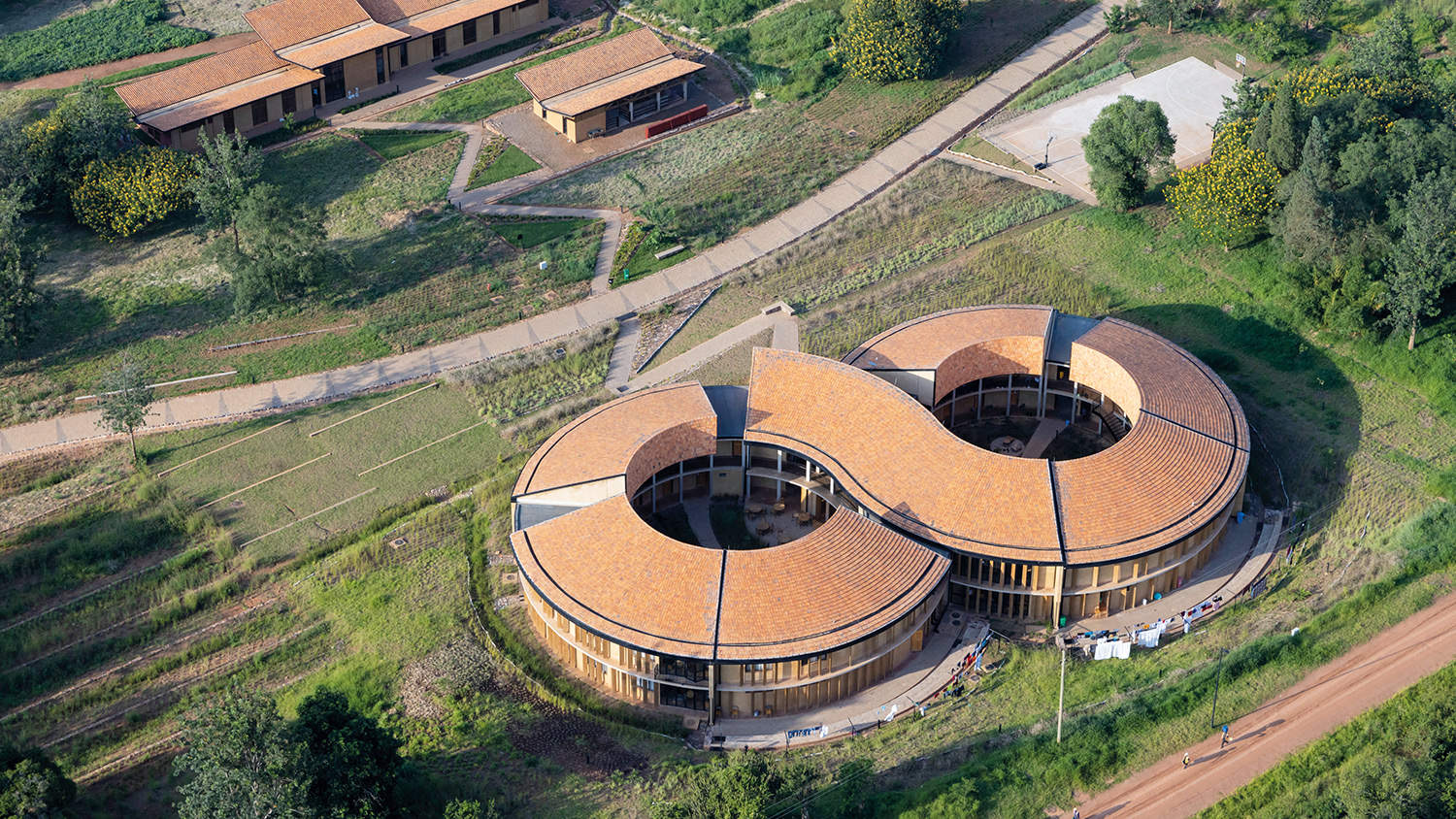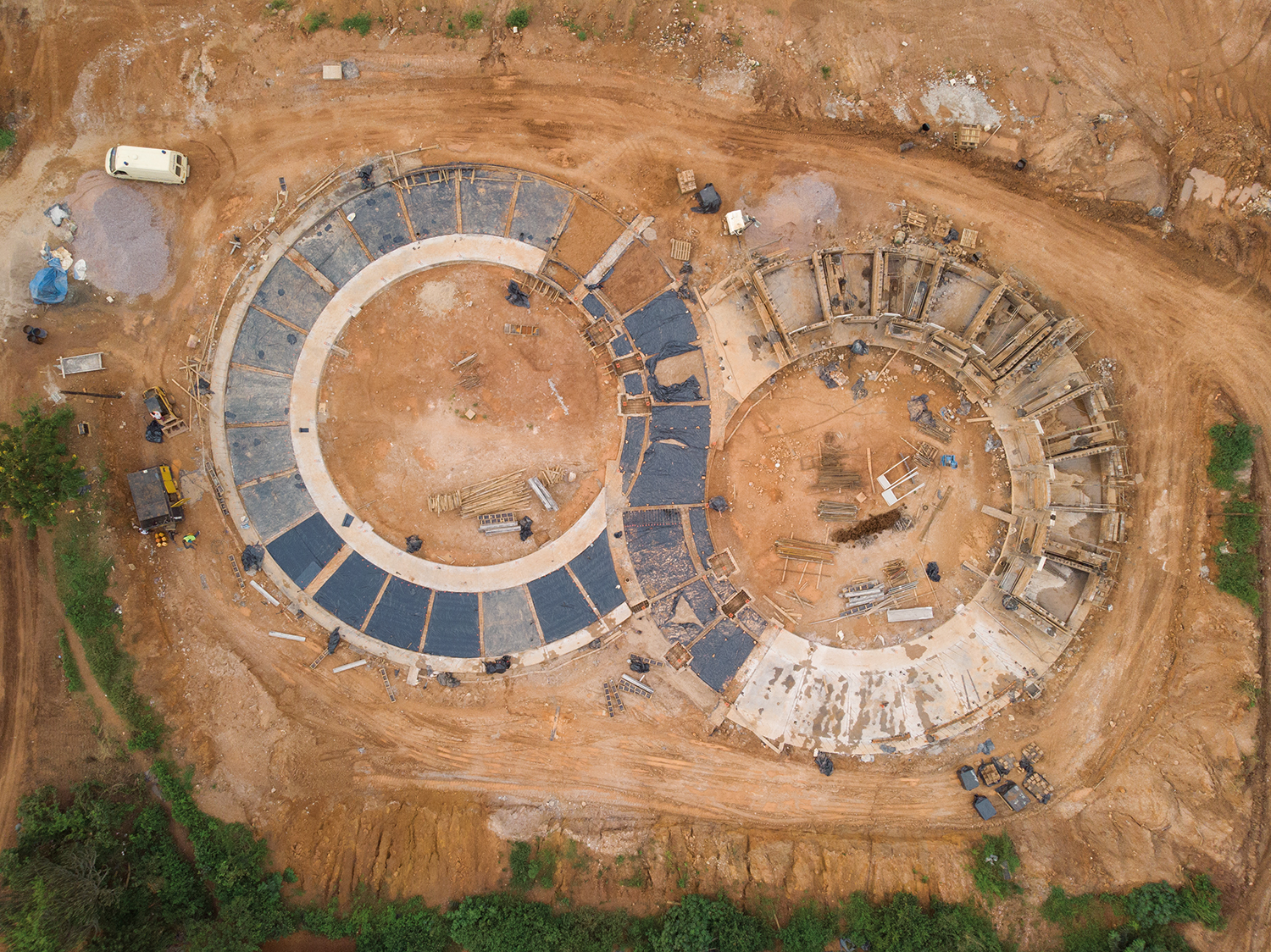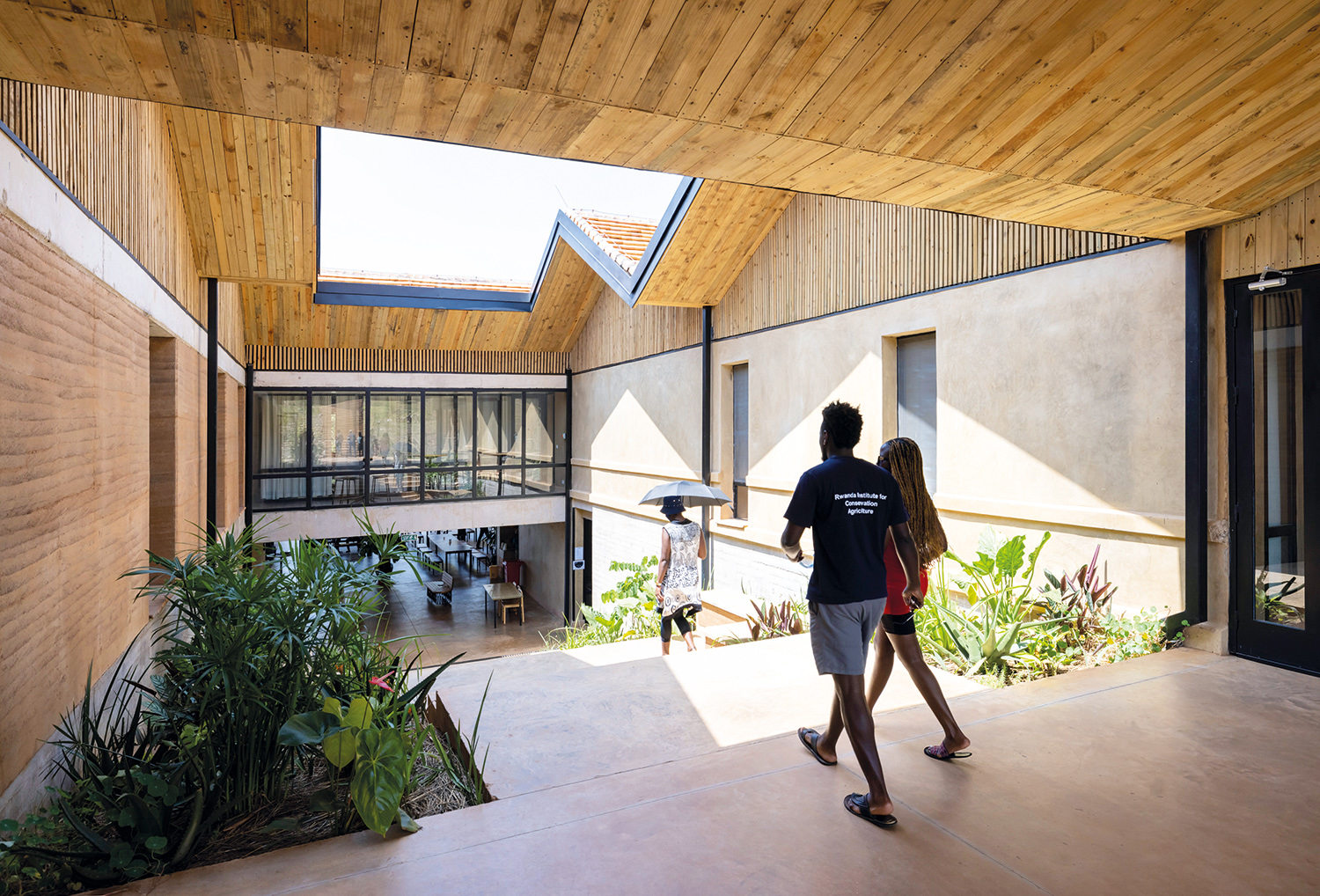
A new agricultural university in Rwanda provides a living case study of how an informed, regenerative approach to both buildings and land can provide a net boost for the environment rather than just minimising harm. By Rod Sweet.
Although we’re still in the early stages, construction has made some progress in thinking about how to reduce the embodied carbon in what gets built, and the amount of carbon emitted in building it.
But the industry is less advanced in thinking about the other side of the coin: how to enhance biodiversity and the health of habitats even as we build in them.
The challenge is how to do more good rather than just do less harm, as Will Arnold, head of climate action at the Institution of Structural Engineers, told July’s 21CC podcast.
One recently completed project, a new agricultural university in Rwanda, shows what is possible to achieve when habitat improvement is baked in as a requirement from the start.
The project
The Rwanda Institute of Conservation Agriculture (RICA) opened fully last year, offering a three-year course to around 250 undergraduates.
It’s located in the south-eastern Bugesera District near the Burundi border: an arid, lightly wooded savannah chosen because of the challenges it poses to agriculture, which are common across East Africa.
The 1,300ha site is next to Rwanda’s last savannah woodland outside its national parks. It had previously been logged.

The area is prone to siltation, the process by which stormwater washes topsoil away into local waterways, degrading both the soil and the waterways.
RICA promotes small-scale farming techniques that protect and enhance soil health and biodiversity in vulnerable localities, so it was conceived as a living object lesson
in sustainable agricultural practice.
The campus has 69 buildings with a gross built area of 20,350 sq m set between two lakes. MASS Design Group, headquartered in Boston, Massachusetts, and Kigali, Rwanda, masterplanned the campus site, designed the buildings and managed construction between 2017 and 2023.
MASS is a not-for-profit design collective that promotes architecture for justice and human dignity. Its name is an acronym for Model of Architecture Serving Society.
“We wanted to demonstrate that the buildings can contribute to the mission of regeneration and preserving an ecology,” says architect Chris Hardy, who worked on the site from early 2018.
“The goal was to use the buildings as teaching tools as part of the curriculum and demonstrate that construction can contribute.”
The buildings
MASS strove to achieve the lowest embodied carbon as possible in the buildings while keeping costs down as well. Starting at the bottom, it decided on quartzite stone quarried within 10 miles of the site for their foundations. The stones were placed in an interlocking pattern and hand-mortared by local masons, following traditional foundation methods.

Some reinforced concrete was used for a grade beam to tie the foundation together and to resist seismic bending forces, but using natural, local rock dramatically reduced embodied carbon and emissions from concrete manufacturing and transport.
Moving up to the walls, MASS chose the site’s earth, drawing on another local technique. Its geotechnical and structural engineers dug pits to find the right soil mix for compressed stabilised earth blocks and rammed earth, and strengthened it by adding 4.5% Portland cement and 2.5% volcanic ash.
Local workers made around 2.5 million blocks by hand on site for the 300mm-wide block walls. Using a modified traditional rammed-earth technique, workers made 500mm-wide rammed-earth walls.
MASS brought in a Canadian earth-construction specialist to direct and train the workforce. The thermal mass of the thick, earthen walls and passive ventilation keep the buildings cool without air conditioning.
Timber for the roof frames and other structures was sourced in part from Rwanda’s first Forest Stewardship Council (FSC) certified forest and in part from a forest seeking FSC certification in neighbouring Tanzania. Local clay tiles for the roof were fired with agricultural waste.
MASS calculates that its designs for the buildings led to a 60% reduction in embodied carbon compared to a typical building in Rwanda. “It was a little bit of a complex dance with a lot of levers that we were pulling, but the goal was lowest carbon footprint along with lowest operational cost,” says Hardy.
The land
MASS devised a long-term land management plan for the site, which includes reforesting the depleted savannah; restoring wetlands that had previously been farmed by planting papyrus and native trees; and restoring natural corridors between the lakes and the savannah.
The corridors let species like the grey-crowned crane move between their roosts in the acacia trees to the wetland edge where they feed. The cranes are famous as a symbol of longevity in Rwanda, but they’ve been endangered by their illegal capture and sale as pets.

The corridors also absorb stormwater, slowing siltation and thus conserving soil and protecting the water network.
Crews also removed the toxic flowering plant, Lantana camara, one of the world’s most invasive species. It forms dense thickets and secretes chemicals that inhibit the growth of other plants, such that the soil of Lantana-infested areas had to be removed and buried or used as backfill.
The main pedestrian path through campus is also lined with various plantings for the students and faculty to study and propagate so they can curate landscape types appropriate to the savannah ecology.
Hardy says they planted hundreds of thousands of plants. He is most proud of a new stand of the native flowering tree, Kigelia africana, which he says had been nearly impossible to find in nurseries and anecdotally had become rare in Rwanda.
“Providing them that stock is one of the small ways we’ve demonstrated conservation principles, almost as a subtext of the campus,” Hardy says. “The students will see this orchard nearly every day as they walk to class.”
“We wanted to give them some flexibility,” he adds.
“They’re not going to reforest the whole site because they’re growing food, but [we wanted to] give them the ability to restore the ecologies that are critical to it functioning well.”
Local expertise
Before work began, MASS hired an ecologist, Samuel Nshutiyayesu, to provide an initial assessment of the site’s flora and fauna. He went on to become the institute’s senior lecturer in ecology.

Hardy says that collaboration proved essential.
“He was living on campus and we were able to have meetings with an ecologist that helped form our understanding of the land, and who was living on it and basically in charge of stewarding it for the university,” Hardy says.
“We were able to have ongoing, multi-year conversations about, say, what type of grass is best for this woodland species. I didn’t know anything about that before I got there.”
First climate-positive university
For Hardy, the 60% reduction in embodied carbon is not so much a triumph as a reminder of the scale of the challenge.
“All these things we’ve done have only achieved a 60% reduction, which really means that all of us need to look hard at how we design and build buildings if we’re going to achieve the targets the UN has said we need to hit if we’re going to avoid a climate catastrophe,” he says.
On the other hand, he claims RICA will be the world’s first climate-positive university in 2044, when all the new trees and plantings have matured.
That means that by then it will have sequestered more carbon than was emitted in building it, and it will carry on sequestering carbon into the future, showing how carbon reduction and regenerative land management go hand in hand.











